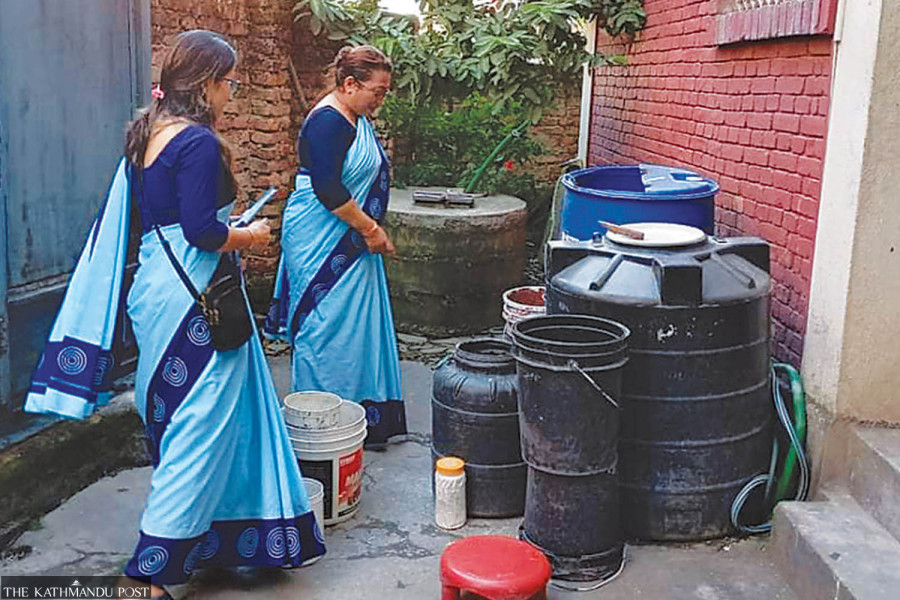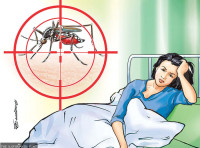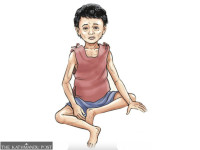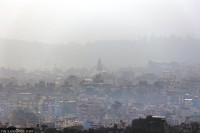Health
Chikungunya surge in China raises alarm in Nepal
Experts say risk of an outbreak is high as dengue-spreading mosquitoes also transmit chikungunya and Nepal has a history of infections.
Post Report
Amid a surge in dengue infection across most districts, concerns are growing over the risk of another mosquito-borne disease—chikungunya.
Experts warn that the risk of a chikungunya outbreak in Nepal is high, as the country has previously recorded infections, and the mosquito that spreads dengue also transmits chikungunya.
Adding to the concern is the situation in China, the northern neighbour, which is currently witnessing a major outbreak of the chikungunya virus. Since people frequently travel between the two countries, chances of cross-border transmission are high.
China has reported over 5,000 cases of Chikungunya infection since the beginning of last month.
Foshan, a city in Guangdong province affected by the outbreak, has reported 5,155 cases, according to media reports. On Thursday, the city upgraded its public health emergency response to level III, which indicates a relatively major public health issue.
“Yes, the risk of an outbreak of the chikungunya virus in our country is high,” said Dr Gokarna Dahal, chief of the Vector Control Section at the Epidemiology and Disease Control Division. “We have the vector that spreads the Chikungunya virus, and the risk of an outbreak of such deadly diseases always exists due to global movement.”
Chikungunya is a viral disease transmitted by the bite of infected Aedes aegypti and Aedes albopictus mosquitoes, which are currently spreading the dengue virus in Nepal.
Experts say the virus does not spread from person to person, but is transmitted by infected mosquitoes. Once a mosquito becomes infected, it and its offspring become carriers and transmit the virus.
Nepal reported its first infection with the chikungunya virus in 2013, and it has since been regularly observed during the monsoon and post-monsoon seasons.
“We don’t know whether or not the chikungunya virus is currently circulating in our country, as we do not carry out routine testing,” said Dr Sher Bahadur Pun, chief of Clinical Research Unit at Sukraraj Tropical and Infectious Disease Hospital. “Patients having dengue-like symptoms often visit hospitals, but when tests are negative, we don’t follow up to confirm whether they are infected with the chikungunya virus instead.”
Health officials admit that doctors in Nepal rarely recommend testing for chikungunya, as most laboratories lack testing kits. Although testing kits are available at the National Public Health Laboratory, the lab also does not carry out chikungunya testing on a regular basis.”
However, the lab says it is prepared to begin testing if required.
“If needed, we will carry out testing for the chikungunya virus,” said Dr Ranjan Raj Bhatta, director at the laboratory. “We have testing kits in stock, but tests have not been carried out because doctors have not recommended such testing yet.”
The symptoms of chikungunya are similar to those of dengue virus infection: fever, joint and muscle pain, joint swelling, rashes, and headache. Longterm complications and deaths are rare according to the World Health Organisation. There is no specific antiviral treatment for chikungunya virus.
A few days ago, the UN health body issued an urgent call for action to prevent a repeat of the mosquito-borne chikungunya virus epidemic that swept the globe two decades ago.
Meanwhile, the Epidemiology and Disease Control Division said that 2,508 people from 74 districts have been infected with the dengue virus since January. Of the 77 districts in the country, infection with the dengue virus has not been reported from Manang, Humla, and Dolpa districts.




 13.12°C Kathmandu
13.12°C Kathmandu













